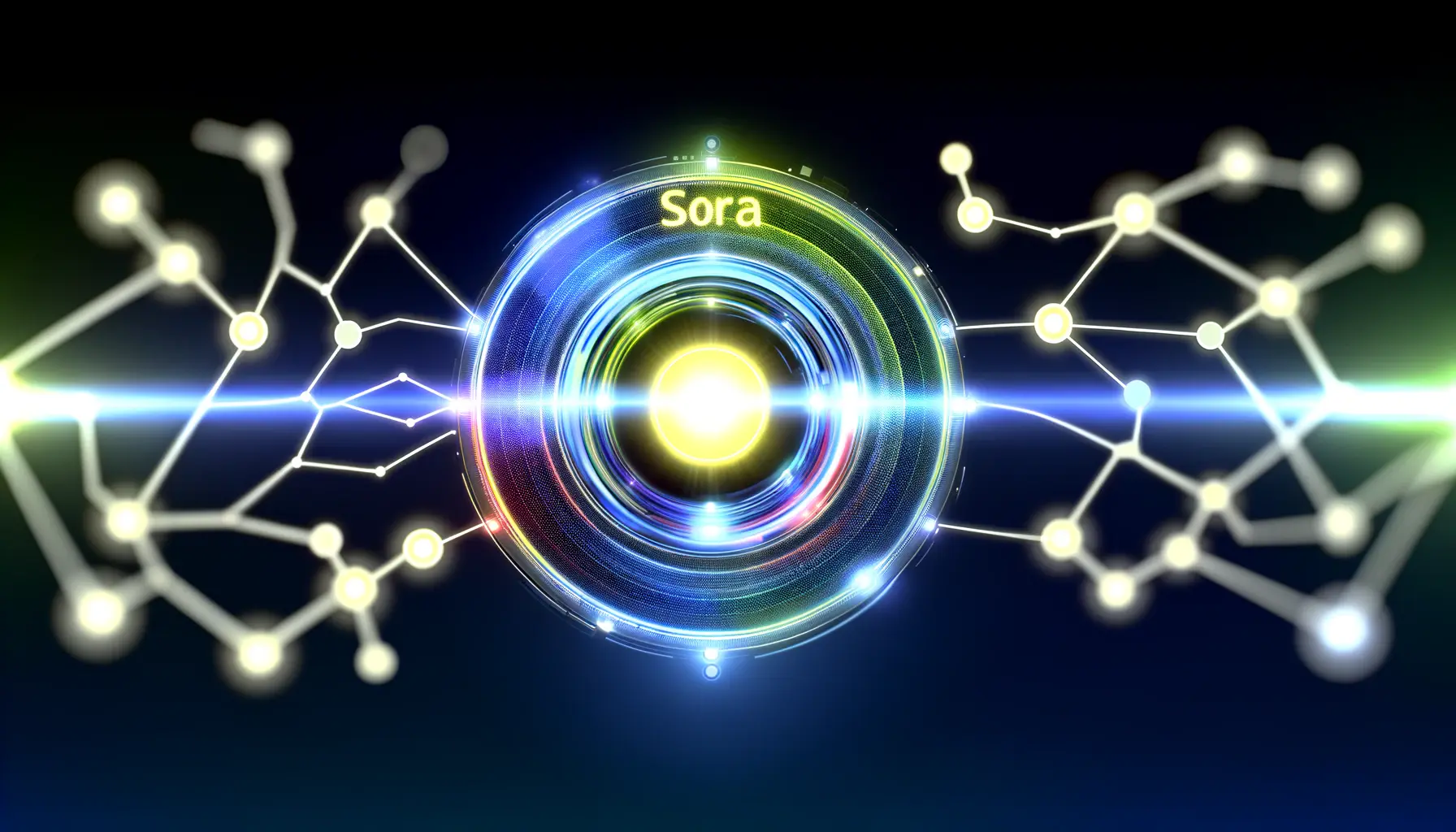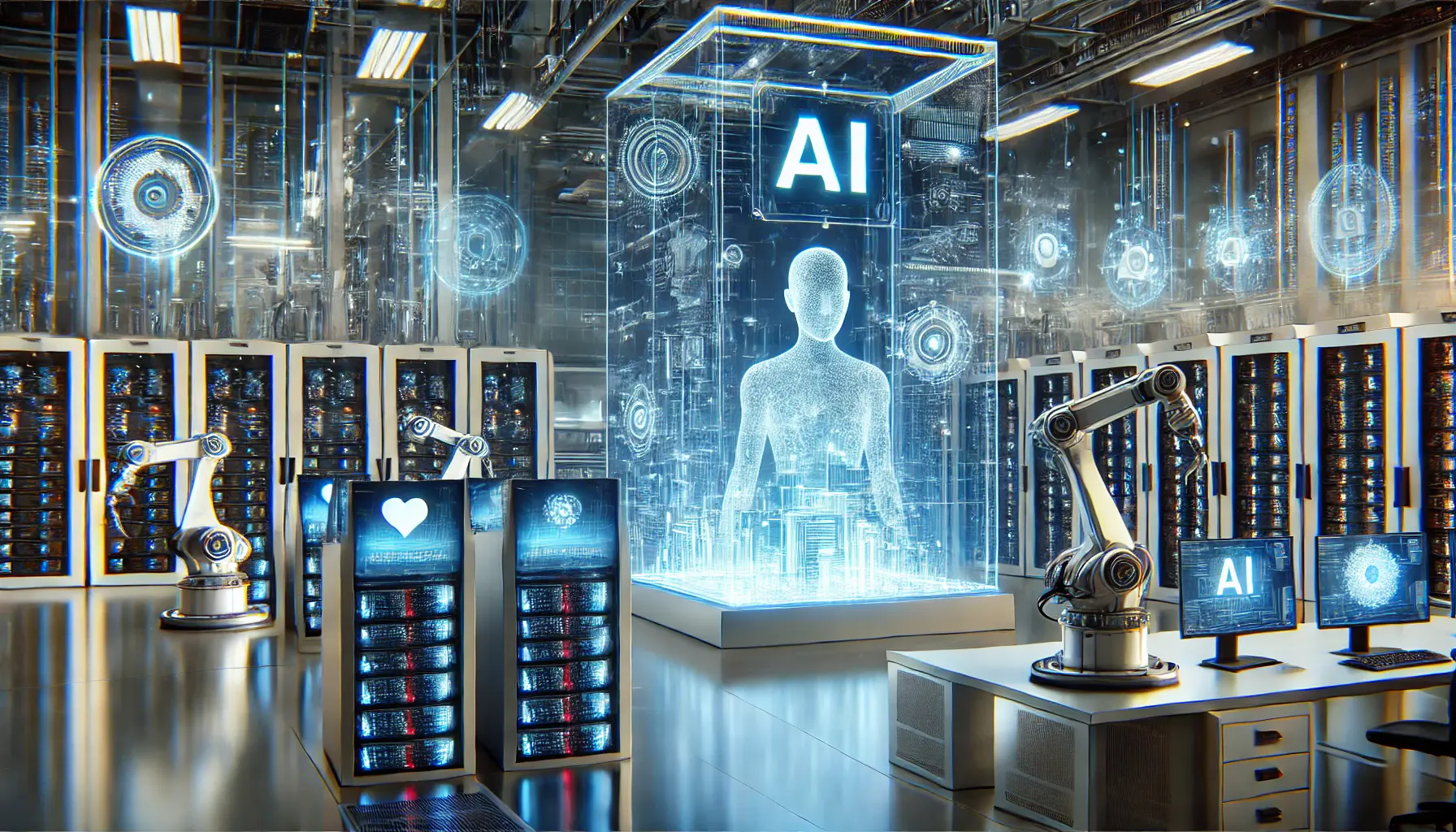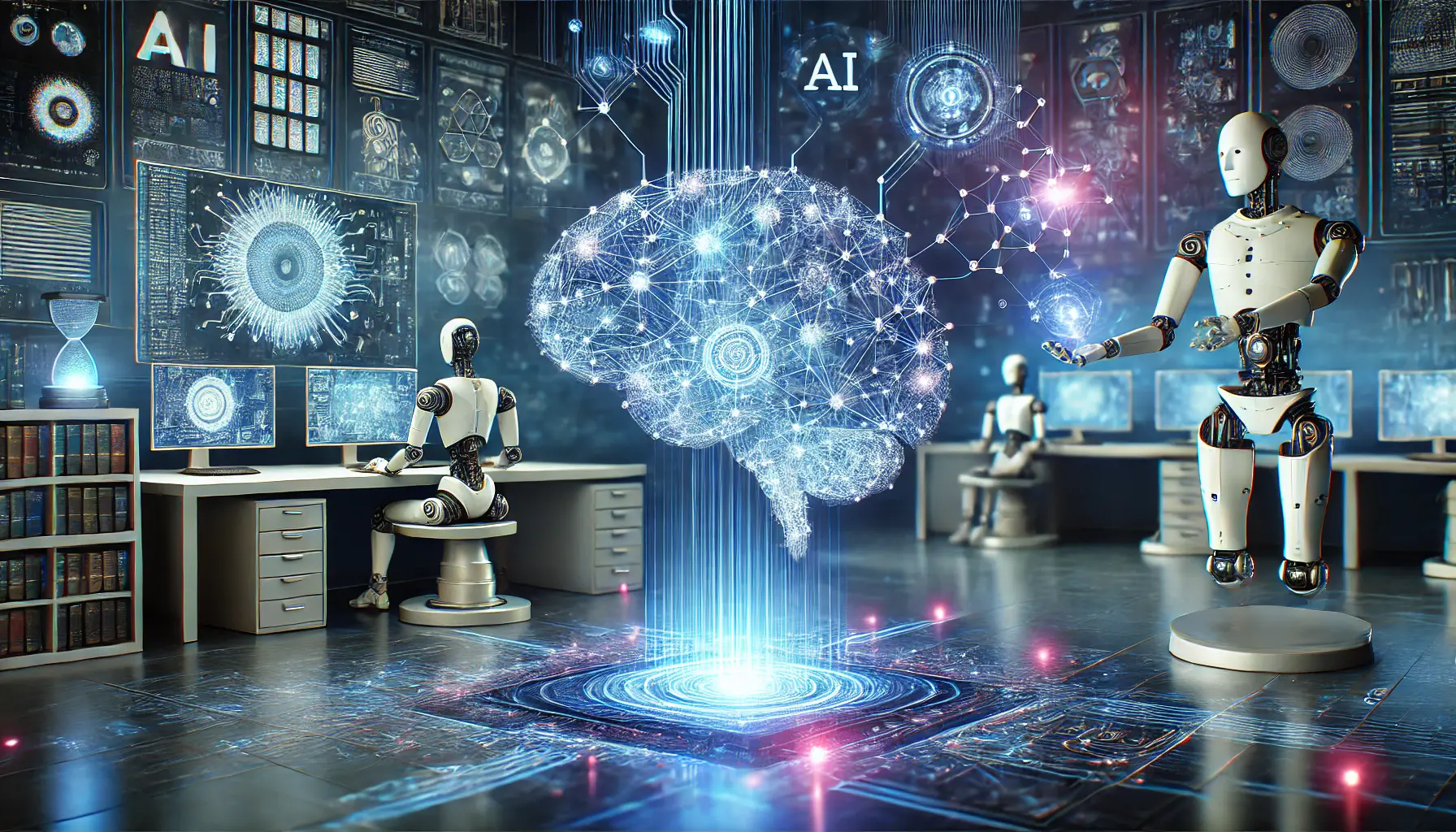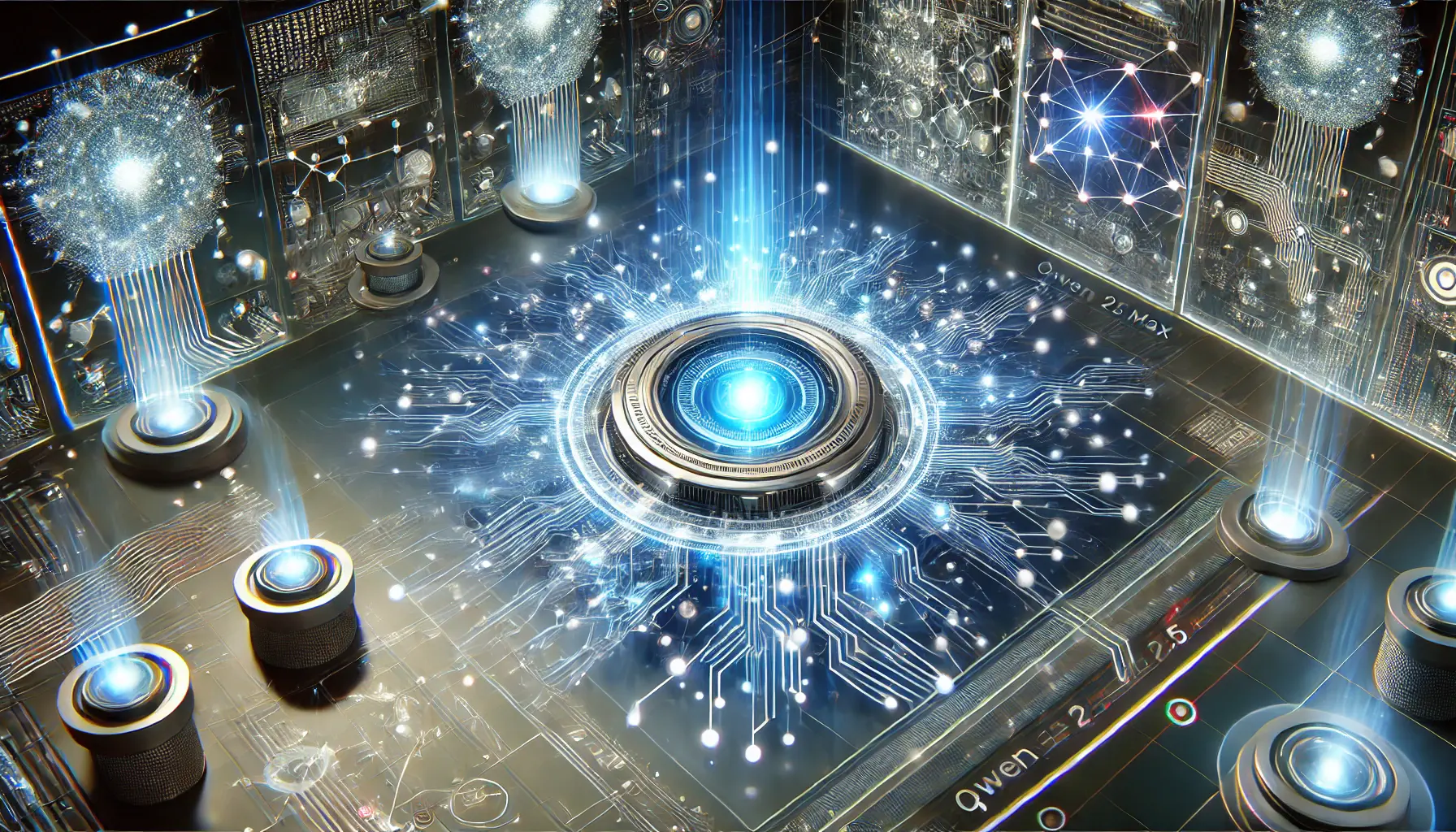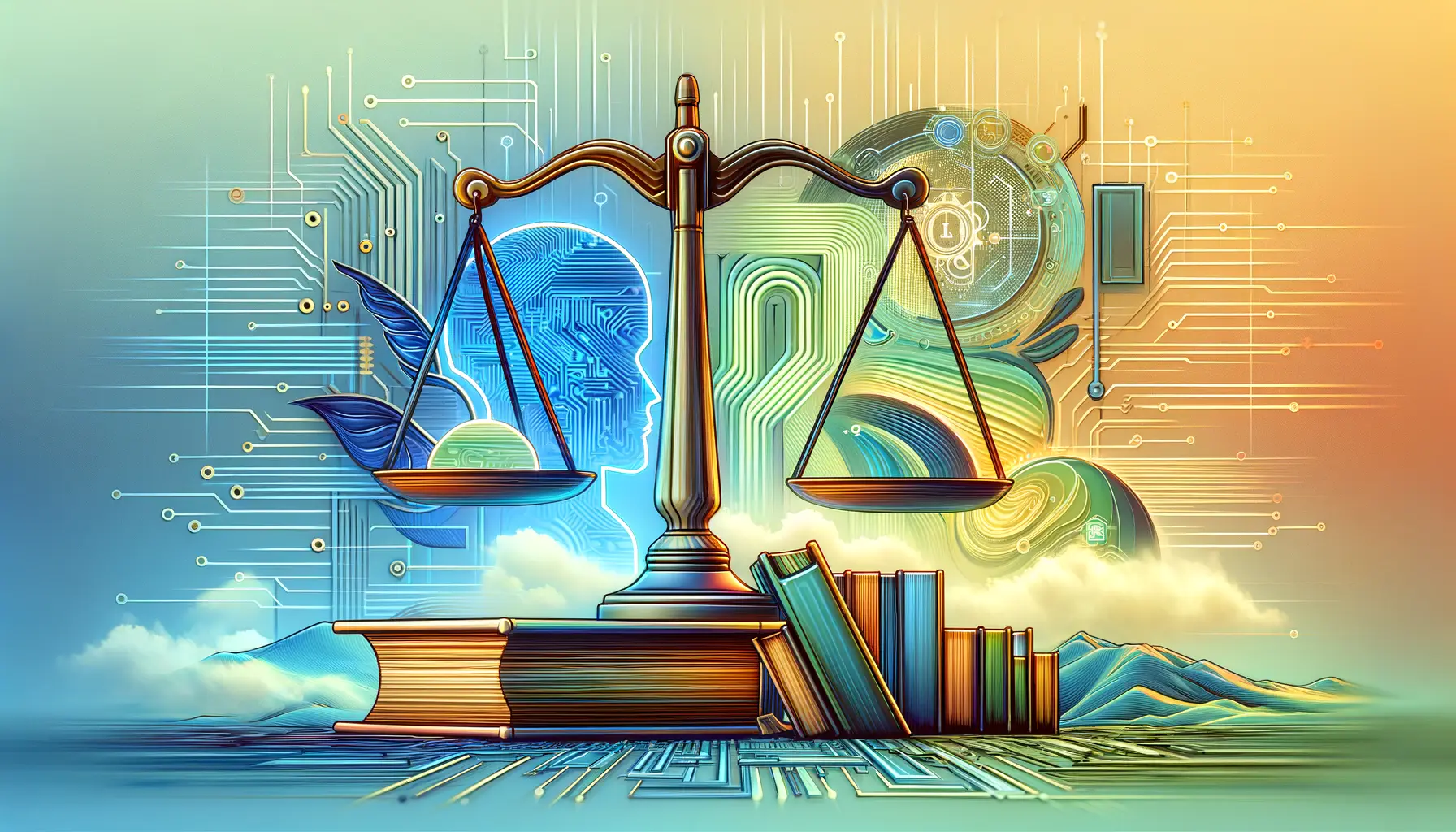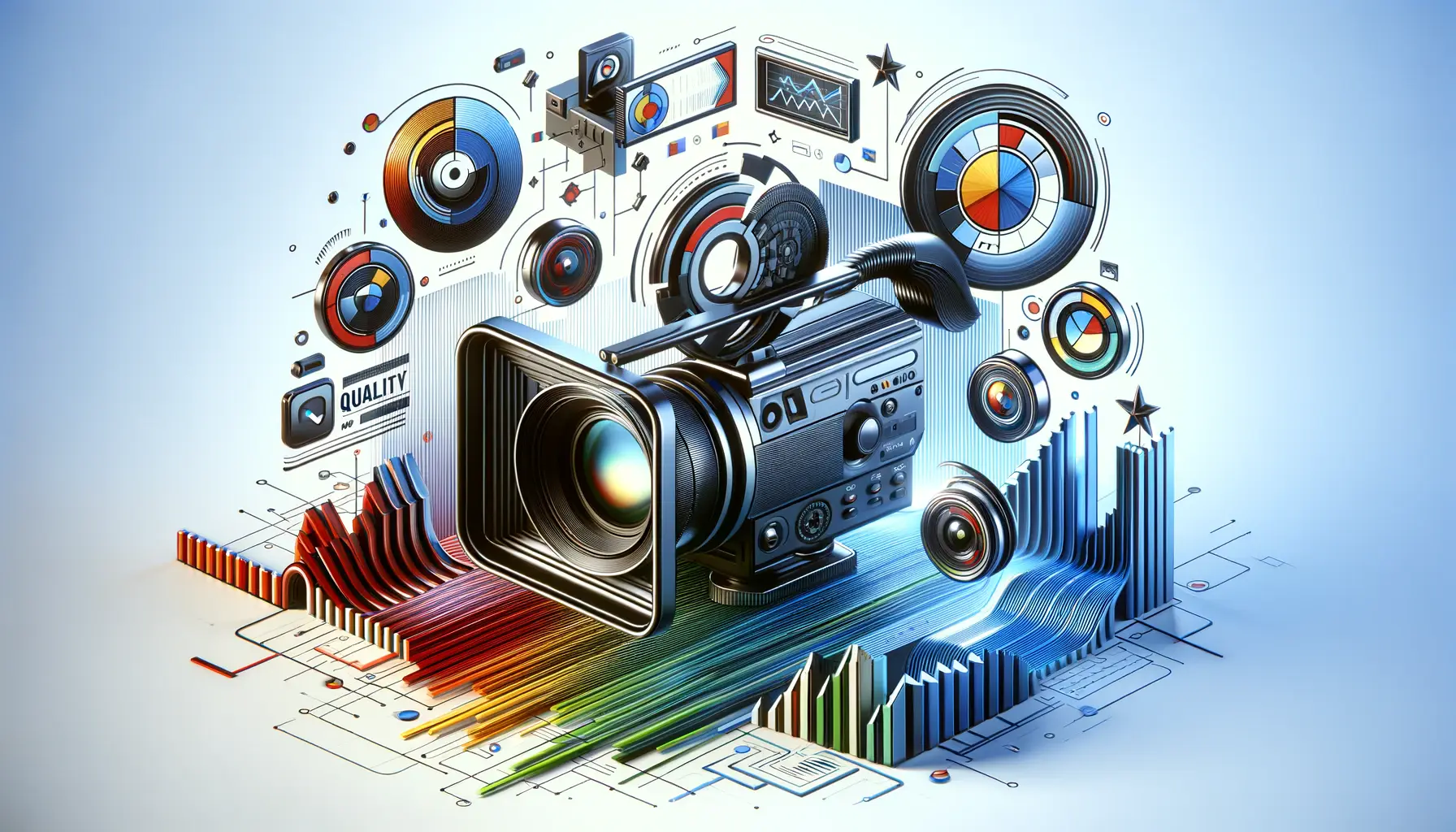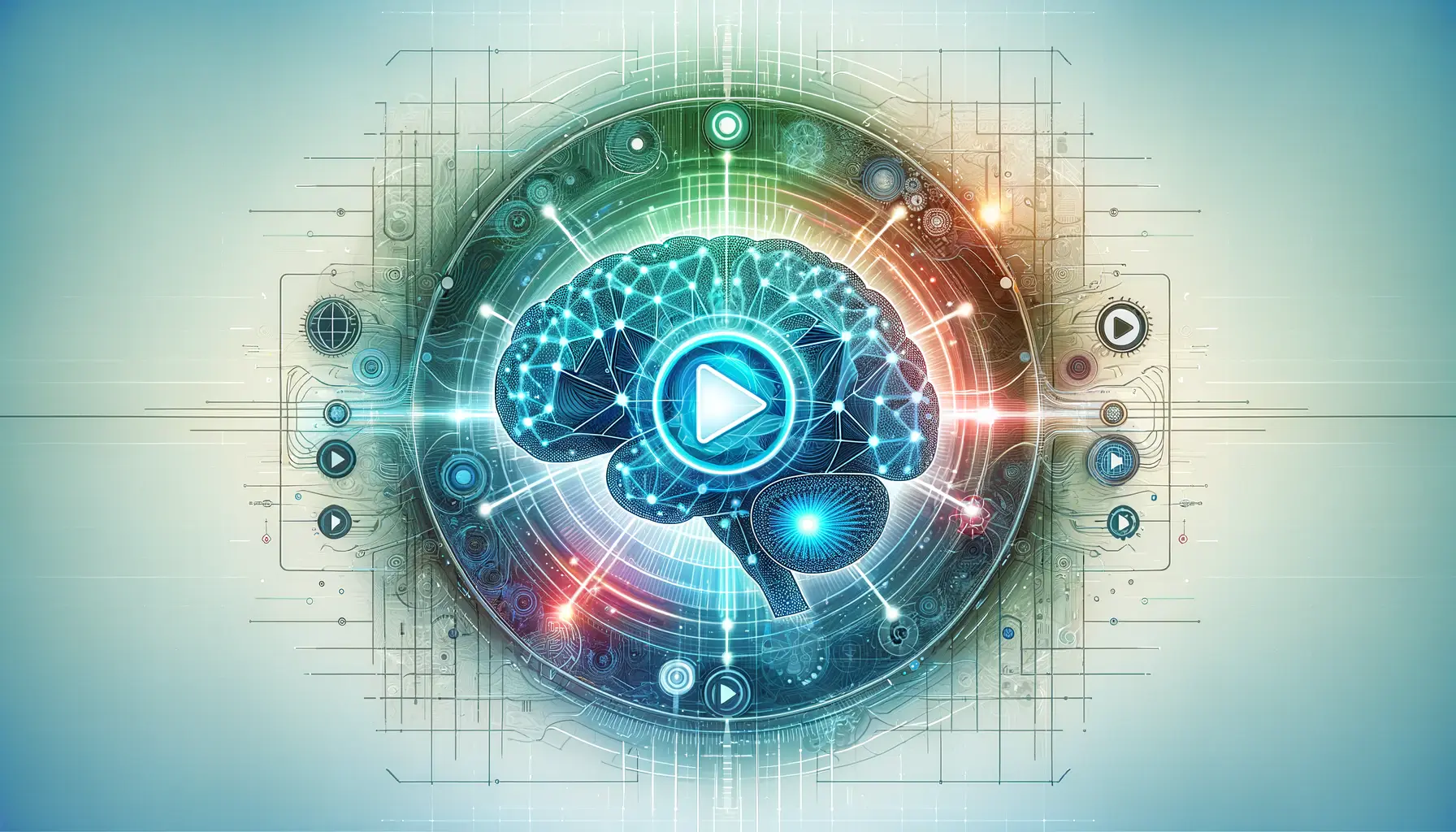In the rapidly evolving landscape of artificial intelligence, OpenAI’s Sora has emerged as a groundbreaking tool, transforming the way we create and perceive digital content.
This innovative technology, capable of generating photorealistic videos from textual prompts, represents a significant leap forward in the realm of generative AI.
As we stand on the brink of this new era, the question of reliability in Sora-generated content has become a focal point of discussion among technologists, content creators, and consumers alike.
The advent of Sora by OpenAI is not just a testament to the advancements in AI but also a challenge to our conventional understanding of content creation and authenticity.
With its ability to produce highly detailed and convincing videos, Sora has the potential to revolutionize industries, from filmmaking and advertising to education and beyond.
However, as with any powerful tool, the implications of its use, especially concerning reliability and trust, warrant a closer examination.
- Understanding Sora’s Capabilities
- Challenges in Ensuring Content Reliability
- Advancements in Detection and Regulation
- Impact on Creative Industries
- Educational Applications and Opportunities
- Future Prospects and Ethical Considerations
- Strategies for Responsible AI Use
- Embracing the Future with Sora: A Balanced Approach to AI
- Sora-Generated Content: Frequently Asked Questions
Understanding Sora’s Capabilities
The Mechanics Behind Sora
At its core, Sora leverages a sophisticated blend of machine learning algorithms, including the diffusion model used by OpenAI’s Dall-E 3 and the transformer-based architecture of GPT-4.
This combination allows Sora to not only generate videos that meet the specific demands of textual prompts but also to do so with an emergent understanding of cinematic grammar and storytelling nuances.
The result is content that goes beyond mere visual representation, offering a narrative depth previously unattainable without human intervention.
The technology’s ability to render videos with such precision and creativity raises important questions about the reliability of the content it produces.
While Sora’s outputs can be strikingly realistic, the distinction between AI-generated and human-created content blurs, leading to potential challenges in areas such as copyright, authenticity verification, and ethical use.
Real-World Applications and Implications
Sora’s introduction into the market opens up a plethora of applications, from enhancing creative processes in the film and gaming industries to creating dynamic educational materials and engaging marketing content.
Its capacity to generate realistic scenarios and visualizations can serve as a powerful tool for storytelling, allowing creators to bring their visions to life with unprecedented ease and speed.
However, the reliability of Sora-generated content also hinges on its potential for misuse.
The technology’s ability to create convincing deepfakes or spread misinformation poses significant risks.
As such, the conversation around Sora extends beyond its technical capabilities to include discussions on ethical guidelines, regulatory measures, and the development of detection tools to ensure the responsible use of this transformative technology.
The reliability of Sora-generated content is a multifaceted issue that encompasses technical capabilities, ethical considerations, and the need for regulatory frameworks to mitigate potential risks.
Challenges in Ensuring Content Reliability
The integration of Sora into the digital content creation sphere, while innovative, introduces several challenges that must be navigated to ensure the reliability of the content it generates.
These challenges are not only technical but also ethical and legal, requiring a comprehensive approach to address.
One of the primary concerns is the potential for creating deepfakes, which can have serious implications for misinformation and privacy.
Additionally, the ease with which Sora can produce content raises questions about intellectual property rights and the originality of AI-generated works.
Below, we delve into these challenges in more detail.
Deepfakes and Misinformation
- Definition and Impact: Deepfakes refer to synthetic media where a person’s likeness is replaced with someone else’s, making the content appear genuine. This technology, when misused, can lead to significant misinformation, affecting public opinion and personal reputations.
- Addressing the Issue: Ensuring the reliability of Sora-generated content involves developing robust detection tools and establishing clear ethical guidelines for use. Public awareness and education on the nature of deepfakes are also crucial in mitigating their impact.
Intellectual Property Concerns
- Ownership Questions: As Sora generates content based on user prompts, it raises questions about who owns the rights to the generated media. This is particularly complex when the content closely resembles existing copyrighted material.
- Legal Frameworks: Developing legal frameworks that recognize and protect the rights of both creators and AI developers is essential. This includes revising copyright laws to accommodate the unique nature of AI-generated content.
Authenticity and Trust
- Verifying Authenticity: With the ability to create highly realistic videos, distinguishing between real and AI-generated content becomes challenging. This erodes trust in digital media, making authenticity verification tools more important than ever.
- Building Trust: For Sora-generated content to be reliably used, there must be mechanisms in place to certify authenticity. Watermarking AI-generated content and creating databases of known deepfakes can help build trust in digital media.
The reliability of Sora-generated content hinges on addressing deepfake concerns, intellectual property rights, and the authenticity of digital media.
Advancements in Detection and Regulation
The rapid development of technologies like Sora necessitates equally swift advancements in detection methodologies and regulatory frameworks.
As the digital landscape evolves, so too must the mechanisms we use to safeguard the integrity of content and protect against misuse.
This part explores the strides being made in detection technologies and the evolving regulatory landscape aimed at ensuring the reliability of AI-generated content.
Detection technologies play a crucial role in distinguishing between AI-generated and authentic content.
These tools, powered by machine learning algorithms, analyze patterns and inconsistencies that may not be perceptible to the human eye.
Meanwhile, regulatory frameworks are being developed to govern the use of generative AI technologies, ensuring they are used responsibly and ethically.
Developing Robust Detection Tools
- Machine Learning Algorithms: Researchers are leveraging advanced machine learning algorithms to identify subtle cues and anomalies in videos that indicate manipulation or AI generation.
- Collaboration with AI Developers: Detection tool development often involves collaboration between regulatory bodies, tech companies, and AI developers to ensure effectiveness across different AI models.
Regulatory Frameworks and Ethical Guidelines
- Global Standards: Efforts are underway to establish global standards and regulations that address the ethical use of AI in content creation, focusing on transparency, consent, and accountability.
- Industry Self-Regulation: Many tech companies are adopting self-regulatory measures, including ethical guidelines and usage policies, to preemptively address potential misuse of AI technologies like Sora.
Case Studies in Detection and Regulation
- Deepfake Detection Challenge: Initiatives like the Deepfake Detection Challenge encourage the development of AI that can automatically detect manipulated content, fostering innovation in the field.
- Legislative Actions: Some countries have begun to introduce legislation specifically targeting the creation and distribution of deepfakes, setting legal precedents for the regulation of AI-generated content.
The balance between innovation in AI-generated content and the development of detection and regulatory measures is crucial for maintaining the reliability and integrity of digital media.
Impact on Creative Industries
The emergence of Sora and similar AI technologies has a profound impact on creative industries, revolutionizing how content is produced, distributed, and consumed.
While these advancements offer exciting opportunities for innovation and efficiency, they also present challenges that need to be navigated carefully to ensure that the creative value is preserved and enhanced rather than diminished.
In this section, we explore the dual nature of Sora’s impact on creative sectors, highlighting both the positive transformations and the concerns that accompany the integration of AI in creative processes.
Revolutionizing Content Creation
- Enhanced Creativity: Sora enables creators to bring their most imaginative ideas to life with unprecedented ease, opening up new realms of creative possibility.
- Accessibility and Inclusivity: By democratizing access to high-quality video production, Sora makes it possible for a wider range of voices and perspectives to be heard in the creative sphere.
Challenges to Traditional Creative Roles
- Disruption of Industry Norms: The ability of AI to generate content that rivals human-created work challenges traditional roles and career paths within creative industries.
- Concerns Over Originality: As AI-generated content becomes more prevalent, questions arise about the originality of creative works and the value of human artistic expression.
Case Study: Film and Animation
- Efficiency in Production: In the film and animation sectors, Sora has the potential to significantly reduce production times and costs, making it easier to produce visually stunning works.
- Authenticity and Emotional Depth: Despite these advantages, there remains a debate about whether AI can truly replicate the emotional depth and authenticity that human creators bring to storytelling.
The impact of Sora on creative industries underscores the need for a balanced approach that leverages AI’s potential while addressing the challenges it presents to traditional creative practices.
Educational Applications and Opportunities
The advent of Sora and its capabilities extends far beyond entertainment and creative industries, presenting transformative opportunities for the educational sector.
By harnessing the power of AI-generated content, educators and institutions can create immersive and engaging learning experiences that cater to the diverse needs of students.
This section delves into how Sora is being integrated into educational content development, highlighting the benefits and exploring the potential for future applications.
Enhancing Learning Materials
- Interactive Content: Sora enables the creation of dynamic videos that can illustrate complex concepts in science, history, and art, making learning more interactive and engaging.
- Customized Learning Experiences: With AI-generated content, educators can tailor materials to suit the learning pace and interests of individual students, potentially improving outcomes.
Challenges in Educational Integration
- Ensuring Accuracy: The reliability of AI-generated educational content is paramount. Ensuring the accuracy of the information presented is a significant challenge.
- Accessibility and Equity: While Sora has the potential to revolutionize education, there’s a need to address issues of accessibility to ensure all students benefit equally from these advancements.
Future Directions in AI and Education
- Personalized Learning Paths: AI technologies like Sora could lead to the development of fully personalized learning paths, adapting in real-time to the student’s progress and interests.
- Global Education Access: By reducing the costs and resources required to create high-quality educational content, AI could play a crucial role in providing access to education in underserved regions.
The integration of Sora into educational content creation holds the promise of making learning more accessible, engaging, and tailored to individual needs, marking a significant step forward in educational technology.
Future Prospects and Ethical Considerations
The trajectory of Sora and generative AI technologies is poised to reshape numerous aspects of society, from how we create and consume content to how we educate and inform.
As we look to the future, the potential of these technologies is boundless, offering opportunities for innovation that were previously unimaginable.
However, this bright future is not without its shadows, as ethical considerations and societal impacts must be carefully navigated to ensure that the advancement of AI serves the greater good.
In this part, we explore the future prospects of Sora within the broader context of AI development, alongside the ethical considerations that accompany its growth.
Expanding Horizons of AI Capabilities
- Technological Breakthroughs: Continuous improvements in AI models and computational power are expected to enhance Sora’s capabilities, making it even more versatile and powerful.
- New Applications: As AI technologies evolve, new applications will emerge across sectors, including healthcare, environmental science, and public safety, where AI-generated content can play a pivotal role.
Navigating Ethical Terrain
- Data Privacy and Security: The advancement of AI technologies like Sora raises significant concerns regarding data privacy and security, necessitating robust protections.
- AI Bias and Fairness: Ensuring that AI-generated content is free from bias and promotes fairness is a critical challenge that developers and users alike must address.
Societal Impacts and Governance
- Regulatory Frameworks: Developing comprehensive regulatory frameworks that can keep pace with AI innovation is crucial for mitigating risks and ensuring ethical use.
- Public Discourse and Education: Engaging in public discourse about the implications of AI and educating society on its potential and pitfalls are essential steps toward responsible integration.
The future of Sora and generative AI is not just a question of technological capability but also of ethical responsibility and societal readiness to embrace these changes in a way that benefits all.
Strategies for Responsible AI Use
As the capabilities of AI technologies like Sora continue to advance, the importance of implementing strategies for their responsible use cannot be overstated.
The potential of AI to benefit society is immense, but so are the risks associated with its misuse.
Developing a framework for responsible AI use is essential to harnessing its potential while minimizing negative impacts.
This section outlines key strategies that stakeholders, including developers, users, and policymakers, can adopt to ensure the responsible use of AI technologies.
Developing Ethical AI Guidelines
- Establishing Ethical Principles: Organizations should develop and adhere to a set of ethical principles that guide AI development and use, emphasizing fairness, transparency, and accountability.
- Stakeholder Engagement: Involving a diverse range of stakeholders in the development of AI guidelines ensures that multiple perspectives are considered, enhancing the ethical framework.
Implementing Transparency and Accountability Measures
- Audit Trails: Maintaining comprehensive audit trails for AI-generated content can help trace the origins of the content and ensure accountability for the outputs produced.
- Openness and Disclosure: Users should be informed when they are interacting with AI-generated content, promoting transparency and allowing informed decision-making.
Encouraging Public Awareness and Education
- Educational Initiatives: Public education initiatives can demystify AI technologies, informing society about both their benefits and the ethical considerations they entail.
- Media Literacy: Enhancing media literacy to include understanding AI-generated content can empower individuals to critically assess and engage with digital media.
Advocating for Regulatory Oversight
- Collaborative Regulation: Collaboration between governments, industry, and academia can lead to the development of regulatory frameworks that balance innovation with societal protection.
- Global Cooperation: Given the global nature of AI technologies, international cooperation is crucial in establishing standards and regulations that transcend national boundaries.
Neglecting the ethical implications and societal impacts of AI technologies like Sora can lead to unintended consequences that undermine public trust and the potential benefits of AI.
Embracing the Future with Sora: A Balanced Approach to AI
The journey through the realms of Sora-generated content has unveiled the multifaceted nature of AI’s impact on our world.
From revolutionizing creative industries and enhancing educational materials to navigating the ethical landscape, Sora stands at the forefront of AI innovation.
However, as we marvel at the possibilities, the responsibility to guide this powerful technology towards beneficial outcomes for society becomes increasingly evident.
Key Takeaways for a Responsible AI Future
In reflecting on the insights gathered, several key takeaways emerge, shaping the path forward for Sora and generative AI technologies:
- Advancements in AI offer unprecedented opportunities for creativity, education, and societal benefit, but they also require vigilant oversight to prevent misuse.
- The reliability of Sora-generated content hinges on continuous efforts to develop detection tools, ethical guidelines, and regulatory frameworks that evolve alongside AI technologies.
- Engaging in public discourse, enhancing media literacy, and fostering an understanding of AI’s capabilities and limitations are crucial steps in building a society that can harness the benefits of AI while mitigating its risks.
Charting the Course for AI’s Ethical Evolution
As we stand on the cusp of a new era shaped by AI like Sora, the collective responsibility to steer this evolution in a direction that upholds human values and societal well-being cannot be overstated.
The development of Sora and similar technologies presents a unique opportunity to redefine the boundaries of human creativity, knowledge dissemination, and ethical governance.
Ultimately, the future of Sora and generative AI lies in our hands.
By adopting a balanced approach that embraces innovation while addressing the ethical and societal implications, we can ensure that AI serves as a force for good, enriching our lives and expanding our horizons.
The journey with Sora is just beginning, and it promises to be one of discovery, challenge, and immense potential.
Sora-Generated Content: Frequently Asked Questions
Explore the most common inquiries about the innovative realm of Sora-generated content and its implications.
Sora is an AI by OpenAI that creates realistic videos from text prompts, using advanced machine learning algorithms.
Yes, users can specify scenes through text prompts, guiding the content Sora generates.
Videos can be up to a minute long, offering detailed and immersive content.
While Sora has vast potential, there’s a risk of misuse for creating deepfakes or spreading misinformation.
OpenAI advocates for responsible use, suggesting adherence to ethical guidelines to mitigate misuse.
Sora’s content generation raises questions about copyright, especially regarding the originality of AI-created works.
Creative, educational, and marketing sectors can leverage Sora for innovative content creation.
Efforts are underway to develop detection tools that can identify AI-generated content, ensuring transparency.
